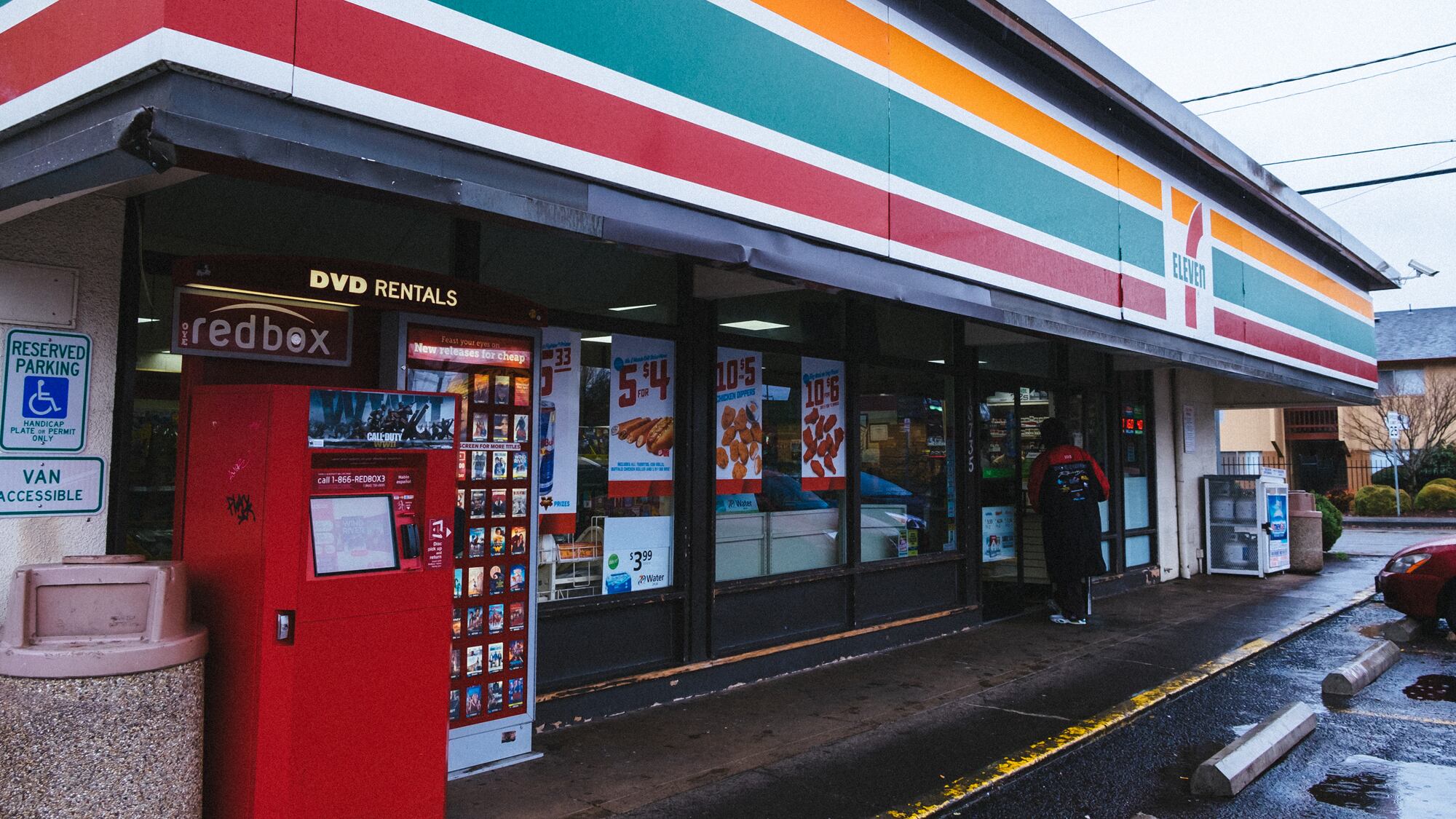A Multnomah County prosecutor on Friday painted a detailed picture of the moment that a man with ties to a white supremacist gang struck a black teenager with a jeep near a 7-Eleven, in his questioning of a Gresham police officer who analyzed the crime scene.
But it was the defense counter-examination that provided the most dramatic development in the hate crime trial against Russell Courtier and Colleen Hunt, the couple who allegedly ran down and killed a black teenager in front of a Gresham 7-Eleven in 2016.
Senior Deputy District Attorney David Hannon asked Gresham Police Officer Scott McFarland to walk him through the investigation. McFarland described 3-D photos of the crime scene; tire marks on the sidewalk near the spot where the jeep hit Larnell Bruce, Jr.; and his analysis of surveillance footage that led police to conclude the jeep's speed was between 51 and 57 miles-per-hour.
After Hannon finished his questions, the defense attorney for Courtier stood up.
"Are you aware that you made a significant calculation error?" Kevin Sali asked McFarland.
"No," McFarland answered, visibly startled by the question.
During cross examination, the defense attorney undermined confidence about the speed that prosecutors and police claimed Courtier's jeep traveled when it struck and killed Bruce.
Sali showed on a white board how McFarland had calculated the speed by dividing the distance traveled in feet by the number of seconds the vehicle can be seen driving that distance on surveillance footage of the moments just before the fatal collision.
Prosecutors had told the jury, and McFarland initially confirmed, that the speed of the jeep was between 51 and 57 miles per hour. But Sali's math showed that the speed McFarland calculated was not converted from feet per second to miles per hour.
That means the Jeep was traveling between 35 and 39 miles per hour. McFarland admitted he made a mistake when calculating the speed in May 2017.
The speed of the jeep does not change the fact that it struck Bruce and killed him. Courtier's lawyers have not contested that he fatally struck the teenager.
But the defense will likely suggest that the speed does not support the prosecution's argument that Courtier intended to kill Bruce and ran him over out of racial hatred.
The error spurred the jury to ask several questions after Sali finished his cross examination, about whether there are more accurate ways to calculate speed that the police could have used and whether hitting someone at 35 miles-per-hour is likely to kill someone. (The Portland Bureau of Transportation publishes statistics that a pedestrian will die in 40 percent of collisions at 30 miles per hour. The likelihood of death goes up to 80 percent at 40 miles per hour.)
"He was still travelling in the wrong lane and on the sidewalk," McFarland told Hannon during follow up questions. "Based upon the video, it appears the vehicle is accelerating its speed."
Prosecutors also presented evidence that showed the jeep had damage to the hood and bumper where it struck Bruce. Some blue fabric from Bruce's clothes was caught on the trailer hitch on the jeep's front. The front license plate had been knocked askew in the collision.
The trial continues to hinge on questions about whether racial hatred motivated the slaying.
Courtier had joined the European Kindred, a white supremacist prison gang. He wore a hat with racist symbols on the night of the fatal collision. He also used racist slurs after the incident as he sat alone in a police interrogation room, according to a video the prosecutor played during opening arguments.
The defense lawyers have also raised questions about the credibility of eyewitnesses who saw Courtier mow down Bruce.
The young people who had been hanging out with Bruce at the Gresham 7 Eleven have multiple criminal convictions, most for drug possession and theft. One admitted to using heroin the night of the alleged murder, and told the court he did not want to testify in the case.
But both eyewitnesses offered accounts that support many of the details Hannon laid out in his opening argument.
The trial is scheduled to last until March 22.

